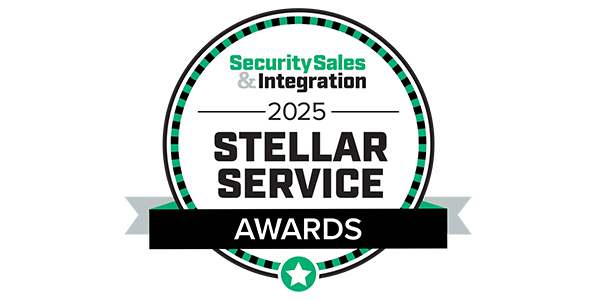Welcome, loyal readers, to 2025. It’s going to be a great year for business!
I am going to do a three-part series that comprises a practical look at the good, the bad and the ugly of the overhyped thing called artificial intelligence (AI), which is all the rage in media and marketing today.
Confusing? You bet! What are the practical impacts it will have on the traditional systems integrator? Well, fasten your seatbelt; it may get a little bumpy!
A Clarification on AI in Security
Let’s get started with a clarification on AI in the security business space.
Narrow AI security applications are “intelligent” systems trained for a particular purpose, such as facial recognition, recognizing speech patterns, video analytic recognition of very specific events, object recognition, and identifying characteristics such as color, gender, direction and perhaps speed.
The big deal is that these attributes are now baked into edge devices thanks to more powerful hardware capabilities.
More horsepower on the edge of the network means less bandwidth is needed, there is less backend server expense to process metadata, there are lower labor costs to manually evaluate data and, ultimately, there are faster security/safety response times to mitigate undesirable outcomes. In simple terms, improved situational awareness reduces liability.
I spoke with Chad Parris, A&E program manager at Hanwa Vision America, to gain his perspective on AI with their systems. He shared that all the company’s cameras have “AI” video analytics software capabilities around specific end-user needs (such as those in the manufacturing sector, for example).
This can be as simple as selecting from a laundry list of recognized (learned) events that can automatically send alerts that require further human attention. Many leading VMS suppliers integrate these features into their software offerings. But what about more complex applications?
The Hanwha team has both API tools and teams to help deliver custom advanced applications when the need arises. Understand this is an intense, time-consuming process that takes money, clarity of desired outcome, and end-user buy-in and support.
AI systems need to “learn,” requiring the right algorithm support and heavy repetition of scenes and objects, variation of objects, affirmation of what is normal (e.g., wind blowing through trees), and clarity as to what’s not a normal scene/event. No real magic — but a lot of work and patience.
A Successful AI Project
So, what makes for a successful AI project?
Two biggies are realistic expectations regarding outcomes and adhering to the discipline of strict installation guidelines and quality control. Parris was kind enough to share the company’s whitepaper on this critical success step. Training, inspection and quality control are essential.
Also, recognize that 92% to 95% accuracy is your target range with AI-enabled cameras for so many reasons (and due to so many variables) in the real world. So, what is the next level of AI?
Human-level AI, known as artificial general intelligence (AGI), is broader in scope for context-aware machines — typically in speech applications. Think of social chatbots used in human-to-robot interactions. You know what I mean: like the ones we yell at on the phone after the fifth time they respond, “I didn’t get that. Did you mean…?” Ugh!
This category holds great promise for business operations, customer service, staff support and reducing repetitive, time-consuming tasks that must be done. AGI is quite mature in call centers, retail, travel and B2B enterprises. More to come on this subject….
Tallying Progressive Successes
Let’s talk about “the good” regarding better-defined AI expectations that have limitations today but that hold great promise for the future. The good includes the following progressive successes:
- Computer and machine learning (repetitive production tasks) capabilities require enormous exposure to “big data sets” of high repetition and high quality, reflecting what must be learned. Manufacturers have already invested a good deal of time in specific applications to deliver reliable “recognition.” (But remember: It’s not perfect.) These products have a laundry list of programming options to tailor a good working solution for your customers.
- Training is the key to success for your associates and, more importantly, your customers. Although AI looks cool in Hollywood movies, it’s not a reality in today’s security industry. Training is readily available for your technicians, but not so much for your sales team. Pay attention to this. It will make the difference between happy and unhappy customers — and, equally important, your business’ profitability.
- The greatest advantage relating to AI capabilities is not technical; it is business-related. Specifically, it’s the opportunity to dig into and learn your customers’ business better than your competitors can. I call that competitive advantage. That — not products, per se — is what C-level management is really buying from you.
My AI assessment is based on my engineering and emerging market business experience. This might make some product marketers shudder a bit. (OK…maybe a lot!) We are in the crawl stage of AI video technology in our beloved security industry.
AI is not a panacea. It is a tool we must effectively learn to use.






